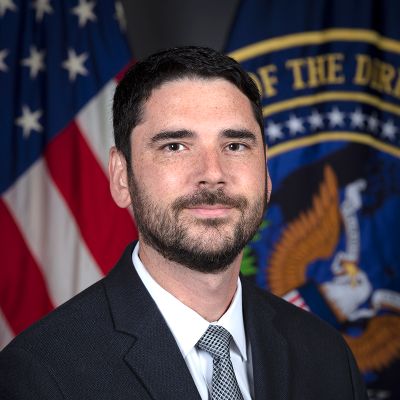GeoAnomalies @ ACM SIGSPATIAL 2025
The 2nd ACM SIGSPATIAL International Workshop on Geospatial Anomaly Detection
November 03, 2025, Minneapolis, MN
Room:Think 4
The 2nd ACM SIGSPATIAL International Workshop on Geospatial Anomaly Detection (GeoAnomalies’25) is dedicated to assembling leading researchers and esteemed industry experts to examine the latest advancements, formidable challenges, and compelling applications within the crucial domain of anomaly detection for spatial, geospatial, and spatiotemporal data. This workshop is passionately designed to cultivate profound collaboration and extensive knowledge sharing among participants from a comprehensive array of research fields—including machine learning, time series analysis, statistics, remote sensing, geospatial analysis, and trajectory analysis.
The workshop will be held on November 3rd, 2025, from 14:00-18:00 at the Graduate by Hilton Minneapolis Hotel in Minneapolis, Minnesota in Room “Think 4”. The workshop will kick off with a keynote by Dr. Shafique follow by six paper presentations separated by a coffee break. The conference proceedings will be published in the ACM Digital Proceedings (ACM ISBN 979-8-4007-2188-5). The frontmatter of for the proceedings can be found Here and the conference program is shown in the following.
🎉Opening Remarks
🎙️Keynote - Dr.Khurram Shafique
Fantastic Outliers and Where to Find ThemOutliers are not always signals, nor always noise, but moments where models and reality misalign. These moments reveal not only what the system fails to capture but also what it assumes to be true. Anomalies sit at a conceptual crossroads: they appear as statistical outliers yet often point toward underlying structure or meaning. As models become more adept at detecting deviations from routine patterns, fundamental questions remain. What exactly qualifies as an anomaly? Is it a failure of the system, or of the model's assumptions? Is it noise, novelty, or something else entirely? This talk treats anomalies not as simple exceptions, but as points of tension where the world resists classification, and our abstractions begin to break down. Through examples in human mobility modeling, it explores how AI systems often confuse chaos for meaning, how regularity can be overfit, and how seemingly insignificant deviations can expose critical system-level blind spots. The talk surveys a range of approaches to anomaly detection in spatial and temporal contexts and examines where they succeed and where they misfire. It calls for a broader interpretive vocabulary, both computational and conceptual, for thinking about anomalies in space, time, and society. Rather than asking only how to detect the unexpected, it asks what our models make invisible, which behaviors are marginalized, and how systems can be designed not just to flag the strange, but to learn from it.
📄Presentation 1: Towards Physics-informed Diffusion for Anomaly Detection in Trajectories: A Summary of Results
Arun Sharma, Mingzhou Yang, Majid Farhadloo, Subhankar Ghosh, Bharat Jayaprakash and Shashi Shekhar [PDF]📄Presentation 2: Grounded Anomalies: Towards Causally Grounded Kinematic Anomaly Generation (Vision Paper)
Joon-Seok Kim and Andreas Züfle [PDF]☕️ Coffee Break
📄Presentation 3: Anomalies In The Depths: Evaluating Unsupervised Anomaly Detection on Real-World Unlabelled Data. A Case Study on Autonomous Ocean Gliders
Federico Scarscelli, Claudius Zelenka, Daniyal Kazempour, Peer Kröger and Florian Schütte [PDF]📄Presentation 4: BeSTAD: Behavior-Aware Spatio-Temporal Anomaly Detection for Human Mobility Data (Short Paper)
Junyi Xie, Jina Kim, Yao-Yi Chiang, Lingyi Zhao and Khurram Shafique [PDF]📄Presentation 5: Semantic Anomaly Detection in Human Trajectories: Preserving Behavioral Patterns Through Calendar Representations
Erfan Hosseini Sereshgi, Mauryan Uppalapati, Yueyang Liu, Lance Kennedy, Andreas Züfle and Carola Wenk [PDF]📄Presentation 6: Towards Recurring Co-traveling Pattern Detection: A Summary of Results
Shuai An, Chris Stanford and Shashi Shekhar [PDF]🎆Closing Remarks
Important Dates:
We invite high-quality research papers to our workshop. For detailed information, please visit our Call for Paper.
- Paper Submission:
August 9, 2025August 29, 2025 - Decisions to Authors: September 26, 2025
- Camera-Ready: October 10, 2025
Organizers
General Chairs
Program Chairs
Program Committees
- Leman Akoglu, Carnegie Mellon University
- Qunying Huang, University of Wisconsin Madison
- Peer Kröger, University of Kiel
- Andreas Lohrer, University of Kiel
- Chris Ovi Rouly, Maelzel Inc
- Cyrus Shahabi, University of Southern California
- Li Xiong, Emory University
Webmasters
- Yueyang Liu, Emory University






